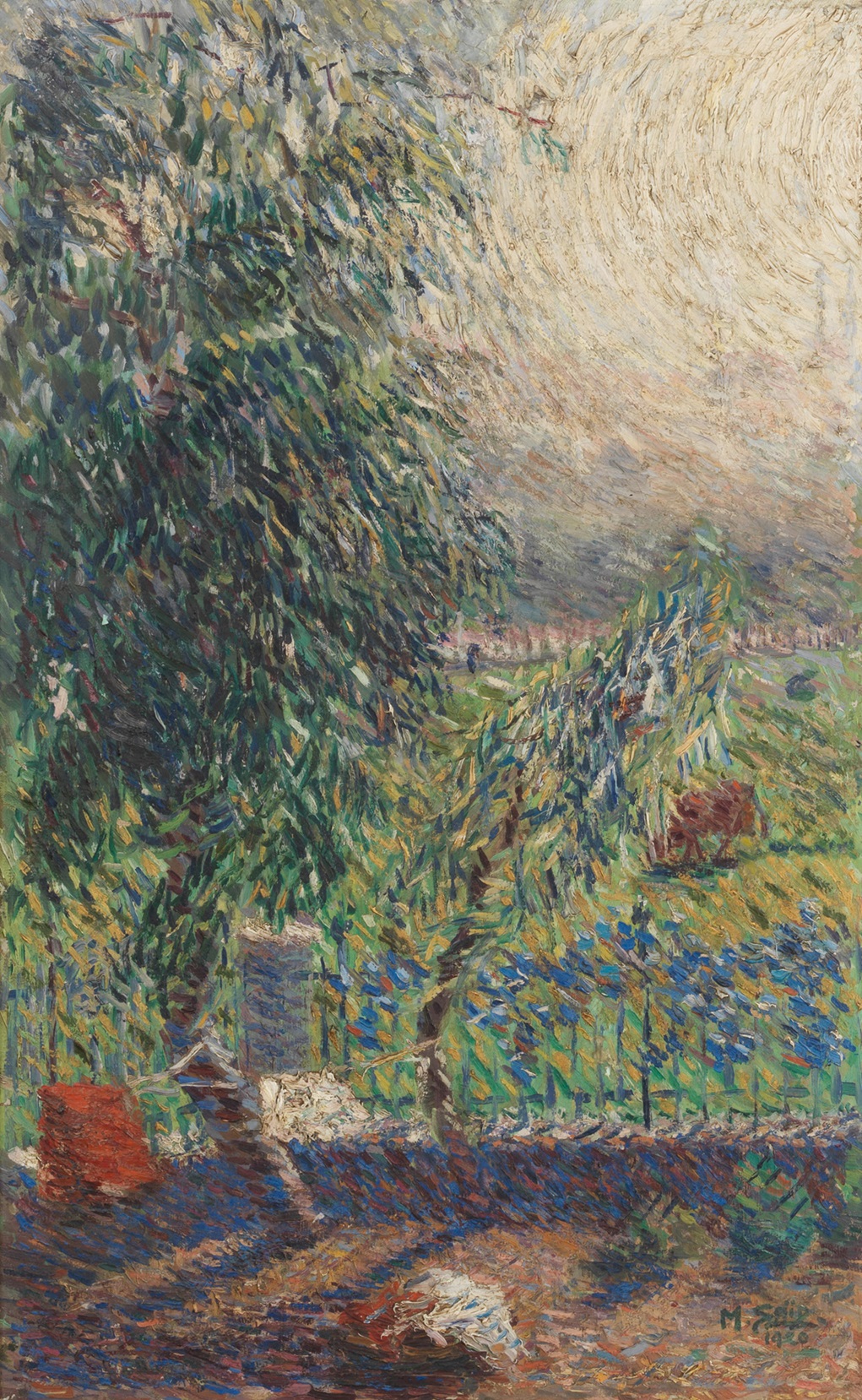The first artistic society in Egypt, La Chimère, which means “Gama’at Al-Khayal,” (The Imagination Group) was founded by Egyptian artists, Mahmoud Mokhtar, Mahmoud Said, Ahmad Youssef, and Mohammed Naghi, with the goal of consolidating their vision of Egyptian Modernism.
As fine arts groups emerged in the wake of the first-ever Egyptian Art School in 1908, La Chimère was one of the main influences on fine arts in the 20th century.
The artistic society represented a reclamation of Egyptian folk art, significantly influenced by efforts to redefine Egyptian culture during and after the British occupation, actively rejecting Western aesthetic values.
Artists from La Chimère held the first exhibition ever in 1928 and went on to play a pivotal role in establishing a distinctly national Egyptian art form. However, the group disbanded in 1930, when Mokhtar left for Paris.
With an emblem featuring an Art Deco-style winged goddess on a golden base, La Chimère harbored goals larger than organizing large international exhibitions. Its nationalistic drive to develop a local art scene, inclusive of all artists, distinguished it from other fine arts groups, such as the Alexandria Society of Fine Arts or the Egyptian Academy of Fine Arts.
The cosmopolitan backgrounds of its founding members, along with their impressive artistic accomplishments, fueled their ambition. They aimed to support the local production of diverse artists and establish the group as an inclusive entity that embraced multiple perspectives, leading to significant projects that enriched both Egyptian and global fine arts.
Mahmoud Mokhtar
Contributing to La Chimère’s success was its leader, Mokhtar, one of the most influential artists in fine arts, whose aesthetic works are recognized by the entire world.
Mokhtar organized artistic delegations abroad and participated in several international exhibitions where his pieces garnered acclaim and success. He also played a crucial role in introducing the modern Egyptian art movement to global audiences and art critics, marking a notable debut on the international stage.
His artistic contributions include neo-Pharaonism, a style that resonated with early 20th-century Egyptian nationalism and drew on the revival of ancient Egyptian architectural and sculptural styles in 18th- and 19th-century Europe. Neo-Pharaonism recognized Egypt’s rich artistic heritage while also serving as a foundation for modern Egyptian art.
Mahmoud Said
Another artist who significantly contributed to crafting an enduring artistic and national narrative centered on Egyptian themes and folklore is Said, a notable member of the artistic society and a key figure in the history of Egyptian modern art.

As the artistic movement in Egypt advanced in the 1920s, it set the stage for the emergence of a distinct Egyptian artistic identity. The artistic society collectively rejected the naturalism of Orientalist painting, instead adopting various expressionist styles to portray Egyptian peasant life and folklore.
Some of the best works and depictions of Egyptian villages and peasant life are Said’s, such as “Mansoura,”, “The Arab Village”, and Maisons arabes à Talkha (Arab Houses in Talkha, 1922) artworks that gained widespread recognition for their beauty.
Along with fine artistic societies at the time, La Chimère has significantly shaped Egyptian visual arts and expanded its reach to a global scale, while defining the contemporary art movement.


